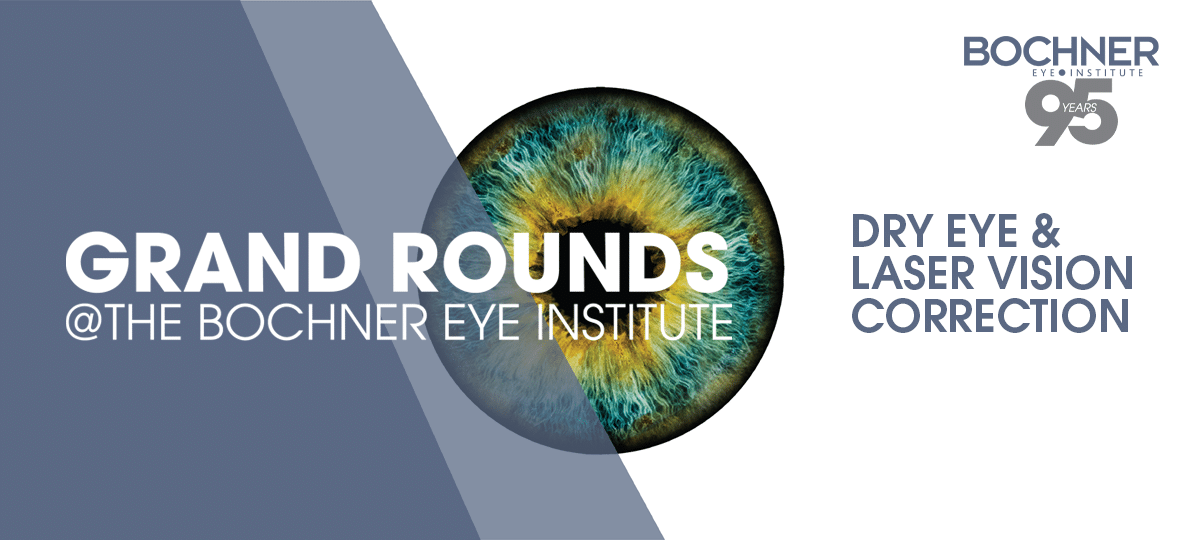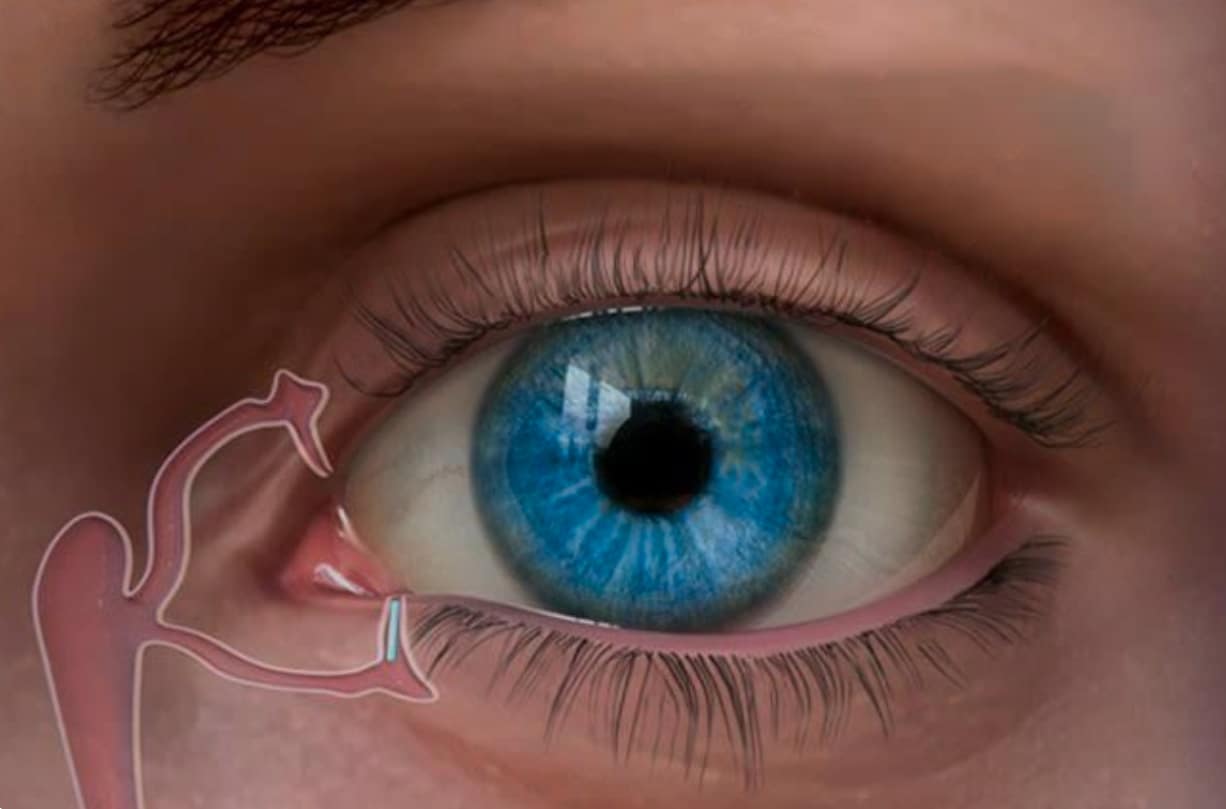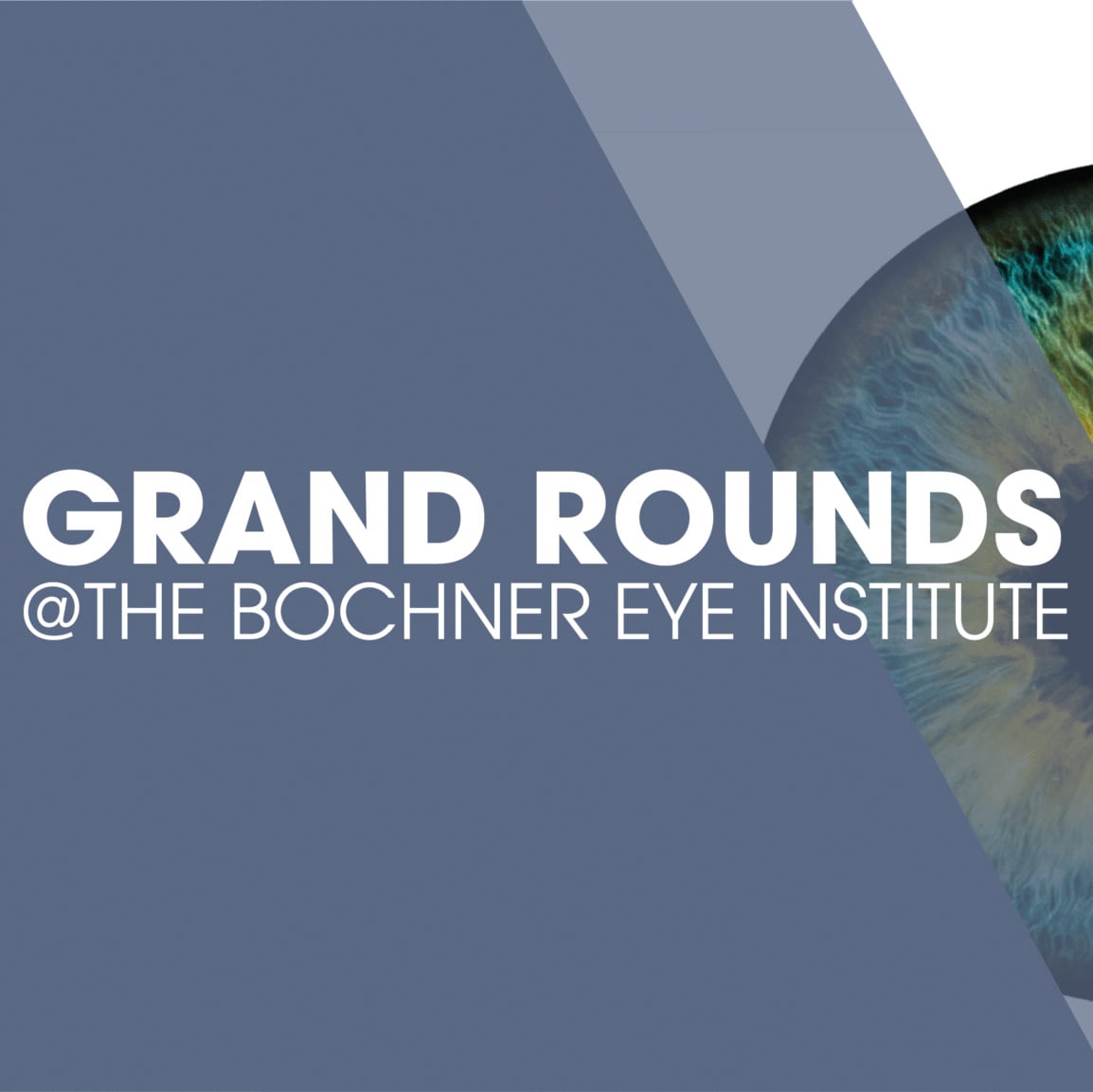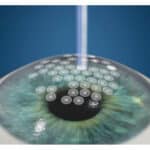
CASE OVERVIEW
A 38-year-old woman with a history of contact lens intolerance presented with an interest in laser vision correction. She had a history of mild dryness and irritation of her eyes especially in the evening. Her refractive error was -5.25-1.25 x 160 (20/20) in the right eye and -6.35 -1.00 x 145 (20/20) in the left eye. Corneal thickness was measured at 550 microns in the right eye and 570 microns in the left eye. Although both corneas were clear, she exhibited a rapid tear breakup.
EVALUATION OF DRY EYE
- Fluorescein dye: To rule out a superficial punctate keratopathy.
- Rose Bengal dye: To assess for conjunctival staining.
- Lid margin evaluation: To check for inflammation, redness, and telangiectasia.
- Schirmer test: To measure tear secretion.
- Meibomian gland imaging: LipiView or similar techniques to assess gland function.
The patient was diagnosed with mixed-mechanism dry eye, involving both meibomian gland dysfunction and aqueous tear deficiency.
OPTIONS IN THE TREATMENT OF MEIBOMIAN GLAND DYSFUNCTION:
- Warm compresses or eye masks.
- Techniques to open meibomian ducts, such as thermal pulsation therapy (LipiFlow) or intense pulsed light (IPL).
- Artificial tears containing oil, like Hydrasense.
- A short course of topical steroids.
- Oral doxycycline to reduce lid inflammation.

OPTIONS IN THE TREATMENT OF AQUEOUS TEAR DEFICIENCY:
- Humidifier at home and/or work.
- Avoid sitting too close to heaters or fireplaces.
- Frequent use of preservative-free artificial tears.
- Punctal plugs (dissolvable made of collagen or nondissolvable made of silicone)
- Cyclosporine eye drops to boost tear production (Restasis or Cequa)
- Lifitegrast to reduce inflammation (Xiidra),
- Autologous serum tears.
- Varenicline nasal spray (Tyrvaya), used twice daily (FDA approved).
- Omega-3 fatty acids from sources like flaxseed, salmon, sardines, or supplements.
- Adequate daily hydration.
The patient’s symptoms improved with appropriate treatment, allowing her to undergo successful LASIK. Postoperatively, she used preservative-free artificial tears and achieved an excellent outcome.
KEY TAKEAWAYS:
1. PRE-OP DRY EYE EVALUATION: Recognizing and addressing preop dry eye symptoms and signs is crucial. Diagnosing an aqueous deficiency, meibomian gland dysfunction, or mixed mechanism dry eye is important to guide appropriate treatment. It is also important to rule out other conditions that can present with dry eye symptoms like blepharitis, trichiasis, entropion, ectropion, systemic medications (antihistamines, hormone replacement, etc), systemic conditions (thyroid disease, lupus, rheumatoid arthritis, sarcoidosis, etc), and lagophthalmos.
2. DRY EYE AND LASIK: Laser vision correction can be performed if the tear film is optimized, symptoms are managed, and any keratopathy is resolved.
3. POST-LASIK TREATMENT OF DRY EYE: Effective postoperative management of dry eye can enhance visual recovery and patient satisfaction levels.
4. IMPLANTABLE CONTACT LENS (ICL) AND DRY EYE: In cases in which dry eye symptoms and signs cannot be adequately controlled preop, then LASIK is contraindicated, and consideration can be given to the ICL.
5. DRY EYE SYMPTOMS AFTER LASIK VS. CONTACT LENSES: A survey of 1,800 patients over three years compared those who underwent LASIK with those who wore contact lenses. This groundbreaking study found that modern LASIK technology improved night driving ease, did not significantly increase dry eye symptoms, and led to higher satisfaction levels at 1-, 2-, and 3-year follow-ups.
Price NO, Price DA, Bucci FA, Durrie DS, Bond WI, Price FW, Three-year longitudinal survey comparing visual satisfaction with LASIK and contact lenses, Ophthalmology 123 (8), 1659-1666, 2016.
6. DRY EYE SYMPTOMS – LASIK VS. SMILE: Numerous studies have explored this question, with one of the most scientifically valid coming from Stanford University. This study examined 40 patients who underwent LASIK in one eye and SMILE in the other. The findings showed no significant difference in dry eye symptoms between the two eyes. Patient reported dry eye symptoms improved after both the LASIK and SMILE procedures.
Ma KK, Manche EE. Corneal sensitivity and patient-reported dry eye symptoms in a prospective randomized contralateral-eye trial comparing laser in situ keratomileusis and small incision lenticule extraction. American Journal of Ophthalmology. 2022 Sep 1;241:248-53.



